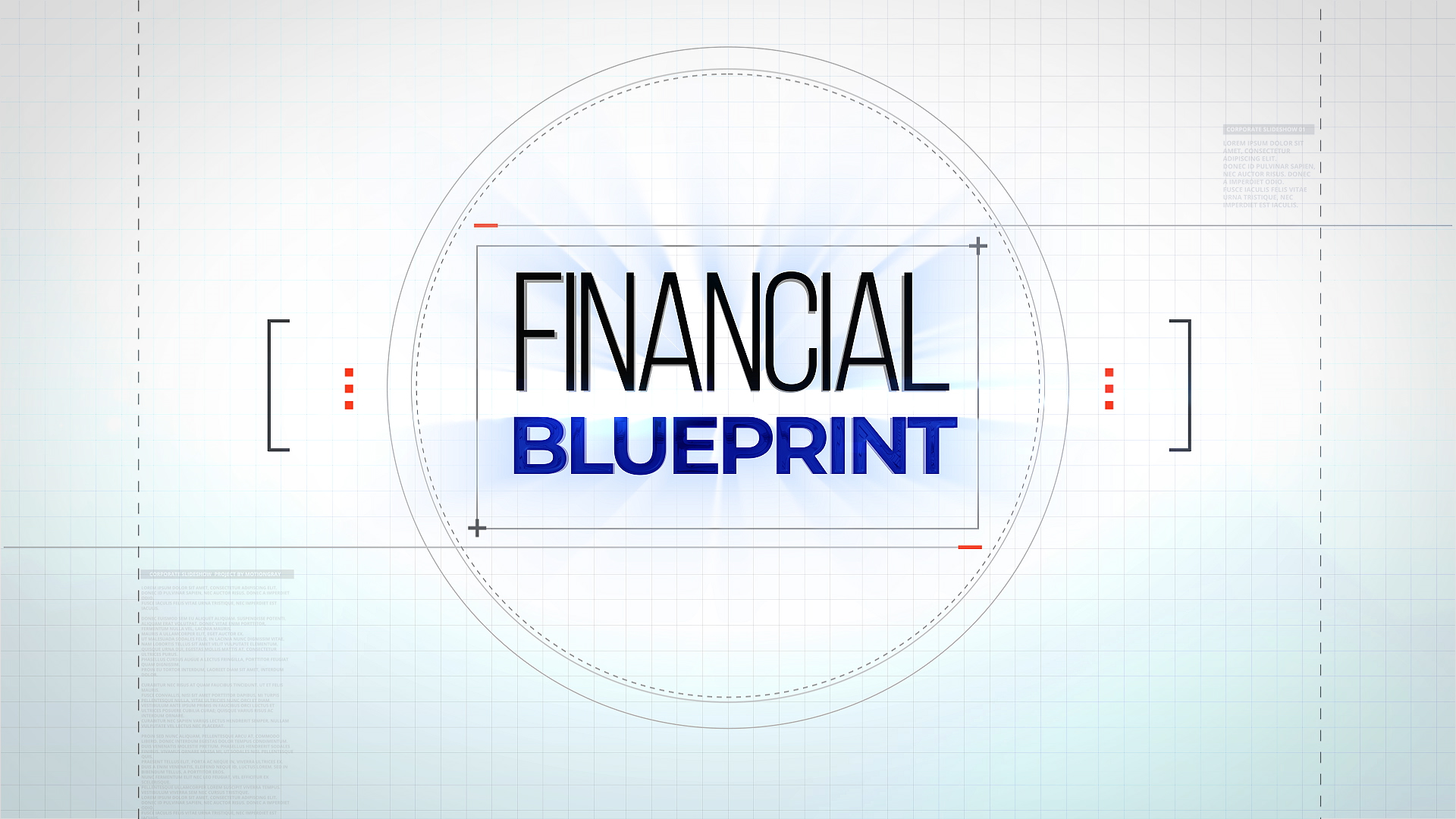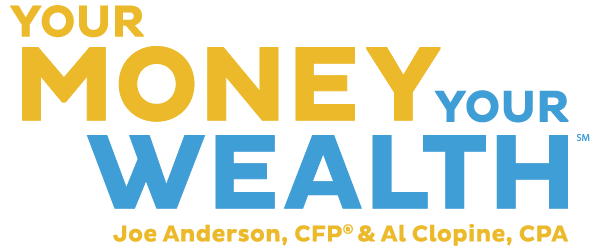How much money will you need to have saved by the time you retire? It’s probably more than you think, and many factors impact whether your retirement savings will last as long as you do. Find out from Joe and Big Al how your lifestyle and spending, your longevity and health care, inflation and taxes, and where you retire all impact the kind of life you’ll live in retirement. They’ll teach you financial moves that can help you become a millionaire, and income strategies so you don’t run out of money.
Calculate your FREE Financial Blueprint
Important Points:
- 00:00 – Introduction
- 00:39 – Is a Million Enough to Retire Comfortably?
- 01:37 – Key Factors, Income Strategies, Become a Millionaire
- 01:55 – Lifestyle and Spending
- 02:19 – Longevity and Healthcare Costs
- 03:23 – Inflation
- 04:05 – Taxes
- 04:57 – Geography and Cost of Living
- 05:49 – Calculate your Financial Blueprint
- 07:08 – True/False: Over half of retirees rely on Social Security for at least 50% of their income
- 08:58 – Income Strategies: Investing and Annuities
- 09:22 – Annuities Pros and Cons
- 11:28 – Investing Pros and Cons
- 12:44 – How Long Will a Million Dollars Last?
- 13:18 – Calculate your Financial Blueprint
- 14:18 – True/False: The 4% rule is a rule of thumb for how much you can withdraw from retirement saving and not run out of money
- 15:25 – What’s Your Retirement Number?
- 17:25 – How to Become a Millionaire
- 18:28 – How to Invest a Million Dollars
- 19:00 – How to Make a Million Dollars Last
- 19:39 – Calculate your Financial Blueprint
Subscribe to Your Money, Your Wealth® on YouTube!
Transcript:
Joe: All right. How much money do you think you’ll need to have saved by the time you retire? It’s probably a lot more than you think. Stick around, folks.
Joe: Show’s called Your Money, Your Wealth®. Joe Anderson here, president of Pure Financial Advisors. I’m with Big Al Clopine, of course. Hello, Alan.
Alan: This is going to be a fun day, I can tell already.
Joe: It’s going to be great. It’s almost a little depressing, though.
Alan: How much do you need, right?
Joe: How much do you need? Is it a couple hundred thousand? Is it a couple million? We’ll figure it out. That’s today’s financial focus.
Joe: Alright, Kiplinger did a study. The magic number. What is the magic number that people think that they need? It’s one and a half million dollars. Is even a million dollars enough to last through retirement? Most people don’t even have a million dollars, but we’re going to break it down. Do you want to become a millionaire? Or how do you create the income once you become a millionaire? Here’s the key factors that we got to concentrate on. Number one, lifestyle and spending. Right, how much money do you spend? How much money are you saving? What does that lifestyle look like? You can control the things that you can. Longevity and health. If you live a lot longer, you probably need a lot more cash. If you have health issues, you’re going to need more money. If I’m healthy, and I still live longer, I probably don’t need enough, as much, as someone that has some health issues inflation and taxes. And of course ,where you live. I need a breather. Let’s bring in the big man.
Alan: All right, so let’s say you got a million dollars, or you have whatever you have, right, let’s figure out how to make it last. What are the key factors in doing that? What are income strategies so that you don’t run out of money and how do you become a millionaire? Joe, I think that’s what we’re gonna try to get into, those three things.
Joe: Let’s break it down. Lifestyle and spending. Median income in retirement for people 65 years of age and older is around $50,000. The average spending is a little bit more than that.
Alan: It’s a common thing that we see. People just don’t have enough income for what they need. And, then it’s like, how long do you live? Longevity. That plays a huge factor in how much money you’re gonna need, obviously. So, here’s what the stats are right now. If you’re 65 years old, you’ll live to around 84. If you live to 75, you get like three more years to 87. And if you live to 85, then the average as you live to 92. But you know, when you look at these numbers, Joe, this is the average, right? Some people live less and some people live more. So you gotta plan for a longer retirement.
Joe: What about health care? $315,000 on average over someone’s lifetime is going to spend on health care. Now this is not a lump sum that someone needs, but they’re just breaking it down annually from a 65-year-old to life expectancy, what to expect to come out of that monthly or annual budget to put together for health care. It’s a big number.
Alan: It is a big number, Joe, and I think Fidelity comes up with this study every year and it seems overwhelming, but I think you gotta think of it more in terms of how much you have to spend per year over your lifetime. It’s 65 to the rest of your life. It’s about $315,000, but maybe it’s about $6,000 to $7,000 a year per person. That sort of gives you a little idea.
Joe: All right. Inflation, the silent killer, right? 3 percent inflation over the next 10 years. So let’s say the cost of goods and services that you’re using today cost $100. Over 10 years, you’re losing purchasing power of that dollar. So it’s going to cost you about $134. Inflation. Most people don’t necessarily understand it or especially how to plan for it. That’s why we invest. That’s why we can’t keep our money in the mattress or the Folgers coffee can. We have to outpace inflation, and as we’re living longer, as we have higher healthcare costs and everything else, you’re going to have a strategy just to make sure that you maintain the lifestyle that you want and all the other unknowns that come into play.
Alan: Yeah, Joe. And then you gotta figure out taxes, because a lot of us have investments in retirement accounts, so that’s pre-tax. You take the money out and it’s fully taxable as ordinary income. So just be aware of that. That’s going to be more expensive, obviously, than a Roth IRA, which is no tax when you pull the money out. If you’ve got a brokerage account outside of retirement, then that’ll probably be capital gains. If you have gains in your portfolio, as long as you hold the assets for more than a year. And then finally, annuities. Some of us have annuities, and that is ordinary income generally, just like the pre tax. So Joe, know where your assets are located.
Joe: Yeah, that’s a really good point. It’s just taking inventory of what you have in each of these to come up with the appropriate strategy on how you want to create that income. And then of course, making sure that you’re controlling the taxes. If you can control the tax long term, you know, that’s more money in your pocket and less in Uncle Sam’s. And then finally where are you gonna live? Right, we’re here in Southern California. The cost of living is pretty high here, but maybe people moving to Texas, right? A little bit lower. No state tax. Florida. No state tax here. It’s a little bit lower cost of living. Or how about West Virginia? $49,000 here in West Virginia. So you know where you want to live is also a key component. Most people like to move out of high expensive states and, you know, go to like no state tax states.
Alan: Well, that is true. So great example because California to Virginia that’s a $30,000 difference for the average. And if you’ve saved money, you got a good pension, it could, you could spend a lot more than that. So just realize that where you go is gonna be a big key factor in how long your money’s gonna last.
Joe: Hey folks, if you wanna get your way to a million, you gotta start with our Financial Blueprint. Go to YourMoneyYourWealth.com. Click on that special offer again this week, it’s our Financial Blueprint, and you get three scenarios. Are you all good? Are you average, or do you need some help in that area? Looking at all key areas of your financial life, the Financial Blueprint will get you to the path of financial freedom. Go to YourMoneyYourWealth.com, click on that special offer. That’s our gift to you, free of charge. You can do it right there in the comfort of your own home. We got to take a break, when we get back. We’re going to get into more millions.
Retirement Income Strategies
Joe: All right, welcome back to the show, folks. We’re talking about millions. How do you make a million? How do you create the income from the million that you created? Or how do you succeed in retirement? Do you have a million dollars even? Most people don’t, so let’s get you the path to it.
Joe: If you need a little bit more help, don’t worry, all of us do. Go to YourMoneyYourWealth.com. Click on our special offer this week. It’s our Financial Blueprint. It can tell you what you’re on track on, what you need help with, and what you need a lot of help with. free of charge. YourMoneyYourWealth.com. answer the questionnaire, it’ll help you out. Now, let’s see how you did on that true/false question.
Alan: Over half of retirees rely on Social Security for at least 50% of their income. True or false? Yeah so looking at singles, individuals. So 70 percent of them rely on Social Security for at least 50 percent of their income. And for married, it’s 50 percent of those. And, you know, Joe, you think about Social Security, it’s really designed to be maybe for about a third of your income. So people relying on at least 50 or more, you’re not gonna have the same retirement that you did in your working years.
Joe: Yeah. And I think claiming strategies when it comes to Social Security is even more important. If you look at the average, right now it’s about $2,000 a month of what people are getting from the Social Security Administration, so around $24,000 a year. However, if you’re claiming strategy is done appropriately, and it really depends on a lot of different factors, this number could increase quite a bit. The longer that you wait to claim your Social Security benefit, of course, the more dollars that you receive. Most people take their Social Security almost as soon as they can get it. And they’re receiving that permanent haircut. If you’re married, there’s combinations of strategies that you want to make sure that you take a look at. Then you want to look at, all right, if I’m still working, if I’m claiming Social Security, what does that do? A lot of rules and regs when it comes to creating this income, but I think a lot of people overlook it and make some huge mistakes here.
Alan: Well, I think so too. And when you look at claiming Social Security age 62, earliest age, vs. 70, the latest age, it’s about a 75% difference, increase, if you wait. So just be aware of that. Now, a lot of people have to create their own income because Social Security and pension isn’t necessarily enough to cover it. So how do you do that? Well, you hopefully have been saving. You hopefully have that million dollars that we’re talking about, or whatever you’ve saved and you have probably a couple of choices. One is you can invest it yourself. Right? Maybe mix it up with stocks and bonds and then you just figure out your withdrawal percentage to try to make that last over your retirement. Some people might go to an insurance company and buy an annuity. An annuity is just a lump sum. You put a lump sum in to create a cash flow for the rest of your life.
Joe: A lot of choices if you want to take the risk yourself, or if you want to transfer that risk to an insurance company. So there’s a lot of pros and cons here when it comes to investing in annuities. So if you want to transfer that risk to an insurance company, you could receive that guaranteed income. So a lot of people don’t necessarily want to deal with the overall stock market. They can give their money to an insurance company, or maybe you might have a pension that has a lump sum option, or you can take the monthly annuity. Very big choices here. The pros are guaranteed income, no contribution limits if you want to put money into that, and it has tax deferred savings. I’m not a huge fan of this. There’s pros, but they’re not great pros in my eyes. I think there’s a lot more cons, because there’s a lot of confusion. There’s a lot of different types of annuities out there. There’s variable annuities. There’s fixed annuities. There’s fixed indexed annuities. There’s immediate annuities. So really understanding what you own is key. If you want longevity insurance, then an annuity is a really good option for you. But if you do not need longevity insurance, if you do not want insurance for your income, I would consider some other strategy.
Alan: There’s so many different annuities and they’re confusing. In fact, when you buy one, and probably in most cases you don’t really even quite know what you’re buying. They can be expensive. They can have long surrender periods to get out of ’em if you made a mistake. So just be aware of that. But Joe, I think if you do buy an annuity, maybe a single premium immediate annuity might be your better choice.
Joe: Yeah. This is pure insurance, so I’m taking a lump sum and I’m going to give it to the insurance company, and they are going to guarantee me a lifetime of income. So let’s say a male at 67 has a million dollars to invest. They put that into the insurance contract, they’re gonna receive $6,300 a month, and this is by Schwab Annuity Estimator that was done here in December of 2024. So $6,300 for that million dollars. You exchange income for that lump sum, and you can never outlive this. So some people think that this could be a really good strategy. By all means, if you want that guaranteed income, that could be an interesting strategy.
Alan: And Joe going back to investments, pros and cons. So pros, you have a lot of choices, right? There’s stocks and funds, there’s mutual funds, index funds, all kinds of things. So you can pick what is going to make the most sense for you. You can have attractive returns. There can be tax advantages, mainly when you’re either in a Roth IRA, and it grows tax-free, or if it’s outside of a retirement account, you have capital gains, but of course there’s cons. Joe, what are some of them?
Joe: Well, yeah, I mean, there’s volatility. So, if I’m investing in the overall stock market, there is no guarantees, there’s nothing guaranteeing the return that I’m going to receive. Could I receive a higher rate of return? Sure. Could I receive a lower rate of return? Absolutely. Could I lose everything? Yes. So you have volatility when you invest, right? There’s tax liabilities. With an annuity, it grows tax deferred, but all of those dollars that had earned tax-deferred for you are going to be taxed at ordinary income. If this is an investment account, at least you will have a capital gains. If it’s in a retirement account, you will have ordinary income on that. If it’s a Roth it’s tax-free. And then there’s decisions that you have to make. What does that portfolio look like? How many dollars do you want to have in stocks versus bonds versus alternatives versus cash versus whatever? What target rate of return are you trying to generate to give you the income that you need?
Alan: So Joe thinking about that million dollars, if you have a million dollars, how long really is that going to last? And it depends how much you take out of it each year. So here’s a few examples, assuming a 6 percent rate of return, right? You can pull out $19,000 a month. Right? But it’s only gonna last about five years. $8,500 will last 15 years. $6,400 will last about 25 years. And $5,600, a little over $5,000, would last about 35 years. So it gives you an idea.
Joe: Alright, if you need help with this, go to YourMoneyYourWealth.com. Click on that Financial Blueprint this week. It’s going to give you a breakdown of several different things of your financial life. Are you good? Are you medium? Do you need some work? YourMoneyYourWealth.com. Takes you a couple of minutes to do but you will have a blueprint for financial freedom. Hey, we’ll be back in just a second folks.
How to Become a Millionaire
Joe: Hey, welcome back to the show folks show’s called Your Money, Your Wealth®, Joe Anderson and Big Al, we are breaking things down today. How much money do you need for retirement? How do you take the money out once you’ve accumulated the wealth that you need? Now we’re going to talk about how do you become a millionaire? What are the steps to become a millionaire? If you’re not there yet, go to YourMoneyYourWealth.com, click on our Financial Blueprint. We can help you out. We’ll talk about the good, the bad, the ugly of your overall financial situation. You can do it for free right in your house. YourMoneyYourWealth.com, click on that special offer. Now let’s go to the true/false question.
Alan: The 4 percent rule is a rule of thumb on how much you can withdraw from retirement savings and not run out of money. True or false? Yeah, it is a rule of thumb, but a lot of people use this as gospel. It’s not gospel, but here’s how it works, right? You got a million dollars, 4 percent of that’s $40,000. That’s how much you can withdraw. This actually came from a study years ago of a couple age 65. 4 percent would last till age 85 or 90. That’s where this came from. Using this rule of thumb, then the $40,000 that you have plus Social Security, that would theoretically be how much you could spend.
Joe: Yeah. The problem with this is, we’re using a million dollars, right? People will take out a lot more than $40,000 out of a million. So the rule of thumb is that you don’t want to take out any more than 4%, because sometimes markets are great, sometimes markets are really bad. So when markets are down and you’re taking out more than 4, 5, 6, 7, 8%, on average the market does 10, so I can pull out $100,000, that is not a very good strategy. That’s a great strategy to lose a lot of money. Let me break this down for you. Here’s your five minute financial plan. What I want you to do first is estimate your guaranteed income sources in retirement. What does that mean? That is going to be your Social Security. Do you have a pension? Do you have real estate income? What other fixed income sources that you can count on outside of your investment liquid portfolio that is going to come into the household? Then you want to calculate what your expenses are going to be. How much money are you spending monthly today? How much do you think you’ll spend monthly in retirement? Most people in retirement spend a little bit more money their first few years. They might travel, they might redo a lot of things at the home, right? They might buy new vehicles, an RV, whatever. Just spend the time and make your wish list as you go into retirement. So now I know what my Social Security estimates are going to be, or my fixed income. Then I can calculate what my expenses are, and then I can determine my shortfall. Let’s say your Social Security and pension payments are going to be $50,000 a year. I want to spend $100,000 a year. So what does “determine the shortfall” mean is that well, here’s my expenses. Here’s my fixed income I am going to be short $50,000. This is what needs to come from my investment portfolio. So how much savings do I need? Well, I can multiply this by 25, or I can divide it by that 4% to come up with my nest egg. So it’s about $1.2 million, give or take. But this is the calculation that you need to do.
Alan: That’s probably the most important calculation that you gotta do when you’re near retirement to figure out do you have enough money? But what if you’re not at retirement? How do you get that million dollars in the first place? Well, I think you probably heard this. the sooner you save, the better this looks for you. So let’s say like a 30-year-old wants to be a millionaire, they would have to save about $700 a month to do that. But if you wait till 40, you start at 40. Now you gotta save almost $1,400 per month. Almost double. And what about 50? I got nothing at 50. I gotta get started. Now you gotta save over $3,000 to get to that same million dollars.
Joe: Alright, you gotta automate your savings if you’re gonna do this. Outta sight outta mind. Pay yourself first. Don’t pay your bills, don’t do dinners and all of that. Pay yourself first. Think about your older self. Pay yourself and automate that. Make sure you’re taking advantage of the match in regards to your retirement plan through your employer. Most – a lot of people don’t even know that they’re missing dollars or keeping dollars off the table here. Catch up contributions: once you turn 50 you can actually save a lot more into your overall retirement accounts that can continue to grow tax-deferred for you or tax-free if you do the Roth options. Look at your fees, make sure that you’re diversified and have a low-fee option.
Alan: Alright so now you finally save that million, what do you do? How do you invest? So stocks, large companies, small company, value, growth, domestic, all kinds of stocks, you can pick mutual funds, index funds, ETFs. That’s a good way to go for diversification. Bonds are important. It’s kinda like a CD with hopefully a little bit better rate of return. That’s kind of the stability part of your portfolio. And then some people would actually do short term CDs for the money they need for the next few years.
Joe: Now you gotta stretch it out, right? Things get a little bit expensive as you approach retirement or in retirement, make sure that you keep your credit card and your debt low, right? Understanding the full balance sheet is really key. What is your mortgage? What is the debt that you have? Some people want to downsize. Hey, I have a very large house. Now it’s just me and the missus. Let’s go to a little bit smaller house. Or maybe live in a low-tax state like Texas. A lot of people are moving around, right? Texas is a great place to live. Maybe you move there. Or you just trim your spending. There’s plenty of strategies that you can implement as you approach or in retirement to make sure that you can stretch the money out as long as you can. If you need a little bit more help than that, go to YourMoneyYourWealth.com, click on that special offer. It’s our Financial Blueprint. It’s going to break things down in your key areas of your financial life and say, here’s the areas that you probably need to take a look at. Here’s the ones that you’re doing pretty well in. Here’s the ones, oh, maybe you need a lot of help. YourMoneyYourWealth.com, click on our special offer, it’s our financial blueprint. For Big Al Clopine, I’m Joe Anderson, we’ll see you next time.
IMPORTANT DISCLOSURES:
• Investment Advisory and Financial Planning Services are offered through Pure Financial Advisors, LLC. A Registered Investment Advisor.
• Pure Financial Advisors, LLC. does not offer tax or legal advice. Consult with a tax advisor or attorney regarding specific situations.
• Opinions expressed are subject to change without notice and are not intended as investment advice or to predict future performance.
• Investing involves risk including the potential loss of principal. No investment strategy can guarantee a profit or protect against loss in periods of declining values.
• All information is believed to be from reliable sources; however, we make no representation as to its completeness or accuracy.
• Intended for educational purposes only and are not intended as individualized advice or a guarantee that you will achieve a desired result. Before implementing any strategies discussed you should consult your tax and financial advisors.
CFP® – The CERTIFIED FINANCIAL PLANNER® certification is by the CFP Board of Standards, Inc. To attain the right to use the CFP® mark, an individual must satisfactorily fulfill education, experience and ethics requirements as well as pass a comprehensive exam. 30 hours of continuing education is required every 2 years to maintain the certification.
AIF® – Accredited Investment Fiduciary designation is administered by the Center for Fiduciary Studies fi360. To receive the AIF Designation, an individual must meet prerequisite criteria, complete a training program, and pass a comprehensive examination. Six hours of continuing education is required annually to maintain the designation.
CPA – Certified Public Accountant is a license set by the American Institute of Certified Public Accountants and administered by the National Association of State Boards of Accountancy. Eligibility to sit for the Uniform CPA Exam is determined by individual State Boards of Accountancy. Typically, the requirement is a U.S. bachelor’s degree which includes a minimum number of qualifying credit hours in accounting and business administration with an additional one-year study. All CPA candidates must pass the Uniform CPA Examination to qualify for a CPA certificate and license (i.e., permit to practice) to practice public accounting. CPAs are required to take continuing education courses to renew their license, and most states require CPAs to complete an ethics course during every renewal period.










